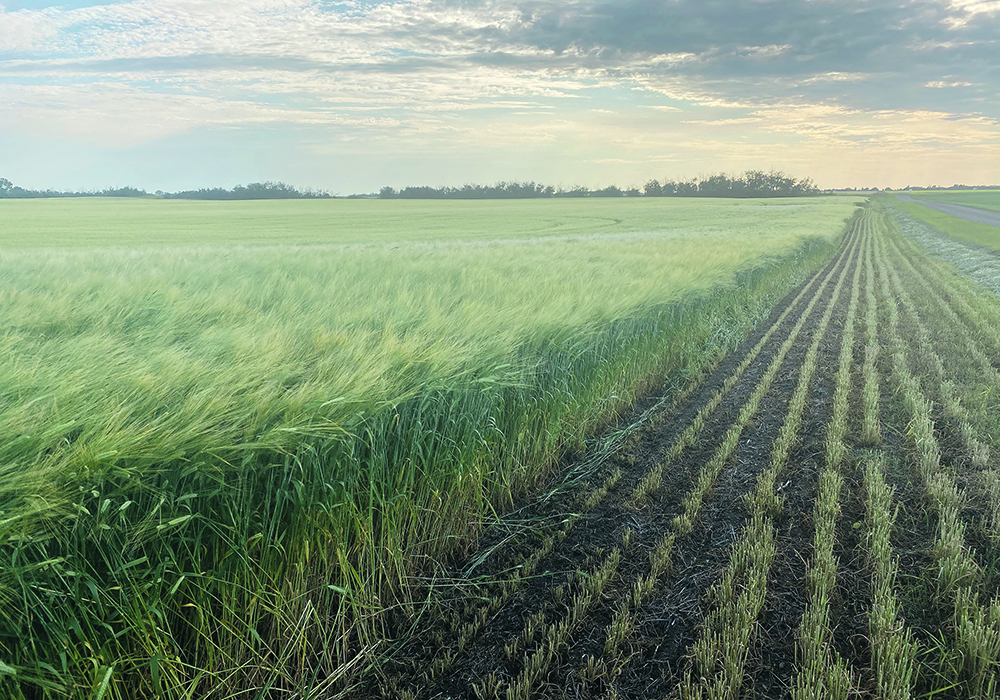Dwindling corn reserves in the Asian country and a tariff cap on imports could be good news for feed barley exporters
China’s dwindling corn reserves could create an opportunity for feed barley exports, according to the author of a web blog on China’s rural economy.
Dim Sums estimates China had 57 million tonnes of temporary corn reserves at the beginning of 2020 but that government stockpile is expected to be fully depleted by early September.
That means China will have to import more corn in 2020-21. However, corn imports will likely be capped by the country’s tariff rate quota of 7.2 million tonnes. Anything above that level faces stiff import duties.
Read Also

Critical growing season is ahead for soybeans
What the weather turns out to be in the United States is going to have a significant impact on Canadian producers’ prices
“While much attention is on corn imports filling or even exceeding the country’s 7.2 million tonne tariff rate quota, imports of corn substitutes play an important role in balancing China’s corn S&D,” stated the Dim Sums blog.
A recent article from China’s Heilongjiang province estimates that imports of corn, sorghum, barley, cassava and distillers grains will reach 20 million tonnes in 2020-21, up from 17 million tonnes the previous year, according to the blog.
Peter Watts, managing director of the Canadian Malting Barley Technical Centre, hopes Dim Sums is right.
“That would be certainly great for the farmers if we did see good, strong demand for feed barley from China this year,” he said.
“That would be helpful with this huge crop coming.”
Agriculture Canada forecasts 10.3 million tonnes of barley production this year. Statistics Canada estimates 10.55 million tonnes. Watts believes it will be closer to 11 million tonnes.
However, he thinks Agriculture Canada’s 2019-20 carryout estimate of 1.4 million tonnes is double what will really be carried forward, so it balances out.
The bottom line is total supply will be much bigger than it has been in recent years, which is why Canada could use a helping hand from China.
China has typically accounted for about 300,000 to 400,000 tonnes of Canadian feed barley exports in recent years.
“It has been our largest feed barley export market by far,” said Watts.
Chinese demand for Canadian feed barley is expected to grow in 2020-21 due to China’s anti-dumping duties of 80.5 percent on Australian barley that went into effect on May 19, 2020.
China was Australia’s top barley customer, averaging 4.27 million tonnes of imports per year between 2014-15 and 2018-19. That represents 63 percent of total Australian sales over that period.
“Typically they would supply quite a bit of feed barley to that market,” said Watts.
He expects Canada to pick up some of that business along with France and Argentina. But if the Dim Sums blog author is correct, there could be a double-whammy impact this year.
“If there is a shortage of feed grains with the reduced corn stocks in China, then that (import) number could easily go up,” said Watts.
China has been importing between five and 8.5 million tonnes of barley the last few years and about three to 3.5 million tonnes of that is malting barley.
That means it typically uses about two to four million tonnes for feed. That number would rise if the Dim Sums analysis is correct.
Dim Sums said China has flipped from having a peak corn surplus of 19.5 million tonnes in 2008-09 to an estimated deficit of 25 million tonnes in 2020-21.
That is despite a 95 million tonne increase in corn production over that timeframe.
The problem is that corn consumption is outstripping supply. Feed use has increased by 100 million tonnes over the past decade, while industrial use is up 40 million tonnes.
Industrial processing of corn has really surged in 2020 because the commodity is being converted into disinfectant to be used to combat the COVID-19 pandemic.
Dim Sums reports that China’s JCI consultancy is forecasting 12 million tonnes of corn imports in 2020-21, up from seven million tonnes last year. China’s agriculture ministry has a far more conservative estimate of five million tonnes.


















